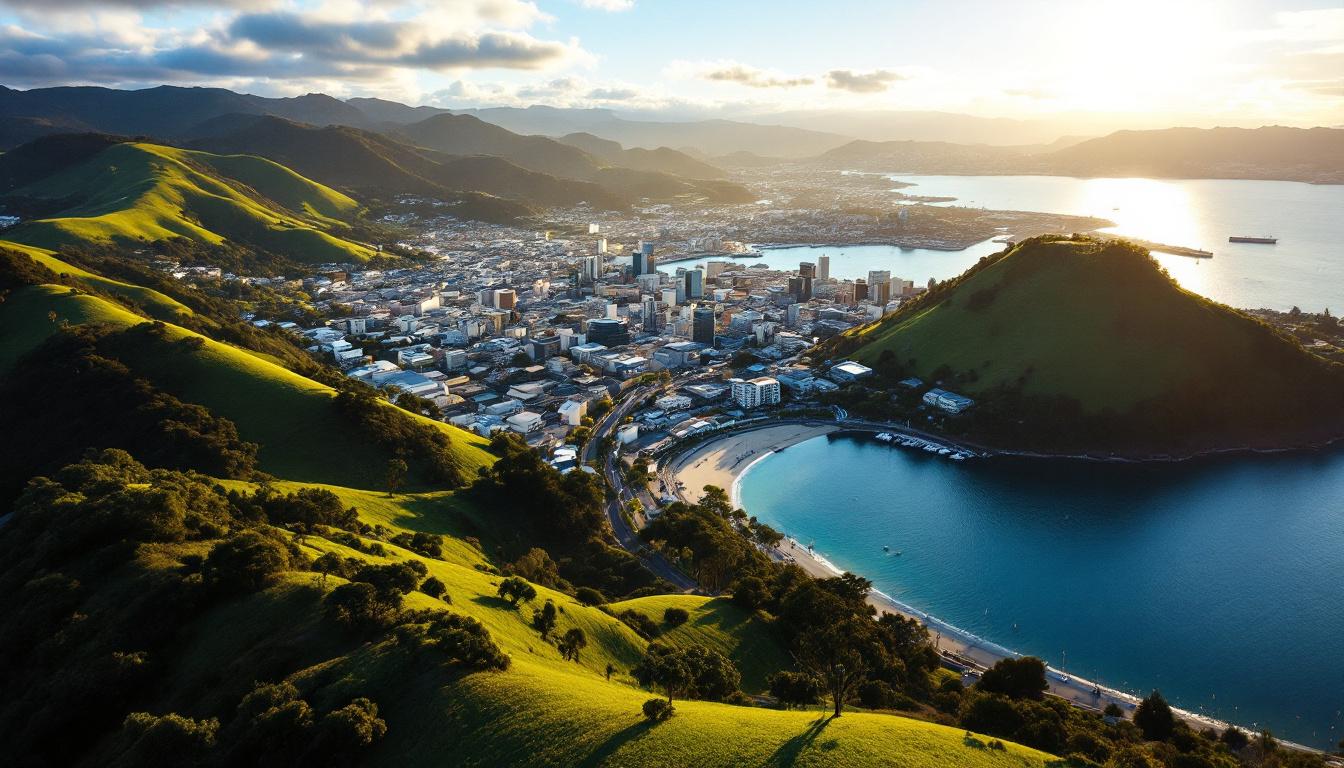Wellington, New Zealand’s capital, offers a cultural experience unlike any other city in the Pacific. Tucked between steep emerald hills and a sparkling harbor, this compact metropolis of 210,000 people packs an oversized artistic punch that has earned it the nickname “Coolest Little Capital in the World.”
Where movie magic meets maritime charm
Wellington’s film industry prowess often surprises first-time visitors. The city serves as the beating heart of New Zealand’s cinema scene, with Peter Jackson’s Weta Workshop transforming this windy harbor town into a global filmmaking powerhouse.
“Wellington doesn’t just embrace creativity—it practically demands it,” explains local filmmaker Taika Waititi. “There’s something about being surrounded by these dramatic landscapes that inspires storytelling in all forms.”
The world’s most caffeinated capital (literally)
With more cafés per capita than New York City, Wellington has earned its reputation as a coffee mecca. The city’s baristas approach espresso with scientific precision, turning the morning cup into an art form at institutions like Havana Coffee Works and Flight Coffee Hangar.
This caffeine culture pairs perfectly with Wellington’s food scene, where innovative chefs transform locally-sourced ingredients into culinary masterpieces. Don’t miss the harissa lamb at Logan Brown or fresh-caught seafood at Ortega Fish Shack.
A museum that rewrote the rulebook
Te Papa Tongarewa, New Zealand’s national museum, revolutionized the museum experience when it opened in 1998. Instead of stuffy exhibits behind glass, Te Papa offers immersive installations that bring Māori culture and natural history to life through interactive storytelling.
The museum’s earthquake simulator lets visitors experience what a 6.3-magnitude quake feels like—a sobering reminder of the geological forces that shaped this nation. Like Japan’s sacred mountains, New Zealand’s landscape tells stories of both destruction and incredible resilience.
The windiest city you’ll ever love
Locals joke that you can spot Wellington tourists by their broken umbrellas. The city’s infamous winds have shaped both its landscape and character. Trees along the waterfront grow permanently bent, and Wellingtonians develop a certain sturdy resilience against the elements.
“We don’t really trust a day without wind,” says longtime resident Sarah McIntosh. “It’s like the city isn’t fully awake until the harbor starts getting choppy.”
A paradise for urban hikers
Wellington offers something rare in capital cities: wilderness within walking distance. The Southern Walkway winds through native bush with panoramic harbor views, while the Town Belt provides 14 kilometers of forest running through the city center.
Much like Morocco’s blue mountain villages, Wellington balances preservation with accessibility, allowing visitors to experience pristine nature without venturing far from urban amenities.
Cuba Street: Wellington’s creative heartbeat
The bohemian Cuba Street district houses vintage shops, eclectic eateries, and the iconic Bucket Fountain—a perpetually malfunctioning water sculpture that’s become a beloved symbol of the city’s quirky character. Street performers create an ever-changing soundtrack as you explore this pedestrian-friendly neighborhood.
Like Bolivia’s historic White City, Cuba Street preserves its architectural heritage while embracing contemporary culture.
Eco-innovation on display
Wellington has pioneered urban sustainability initiatives, from its extensive public transportation network to community gardens and waste reduction programs. Similar to innovative islands in the Maldives, the city demonstrates how environmental consciousness can enhance rather than limit urban living.
Wellington’s compact size makes it eminently walkable, with hidden staircases connecting hillside neighborhoods to the downtown core. These pedestrian pathways, reminiscent of secret passages in medieval French villages, reveal unexpected views and local treasures.
As the sun sets behind the Remutaka Range, painting the harbor in golden light, Wellington reveals its true magic. This isn’t just New Zealand’s political capital—it’s the country’s creative soul, where natural beauty and human ingenuity combine to create something truly extraordinary.
